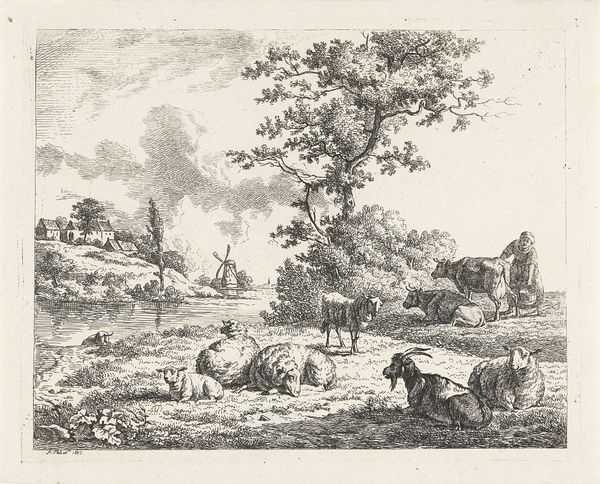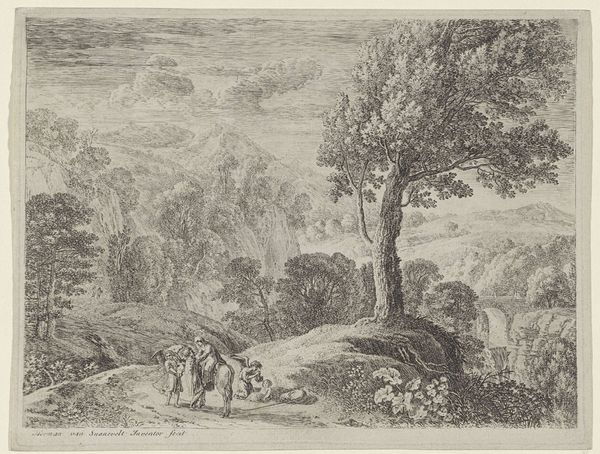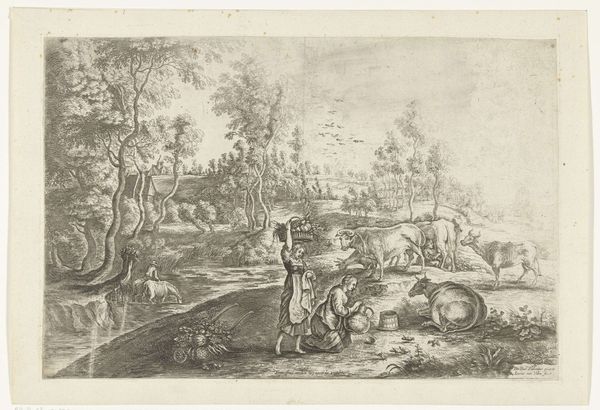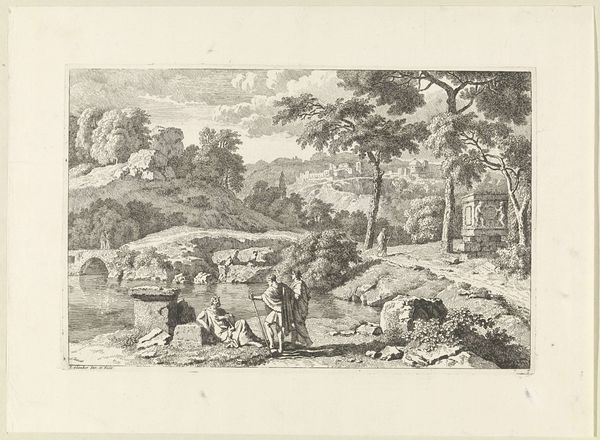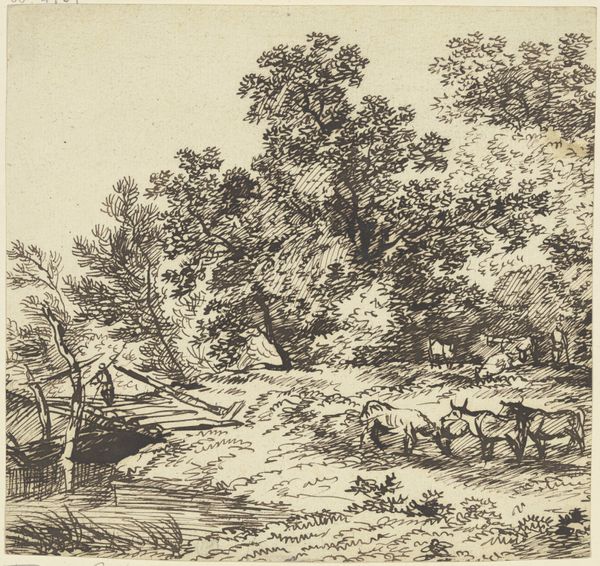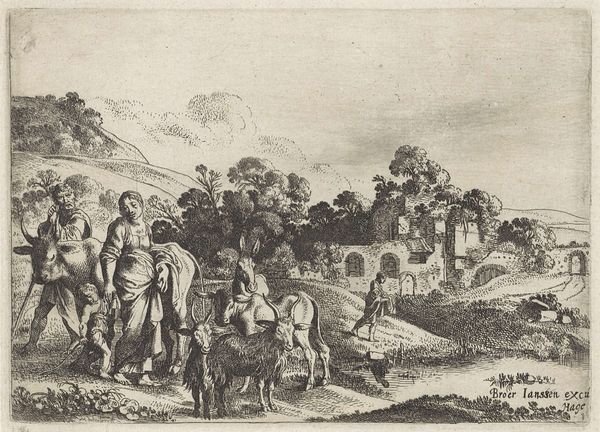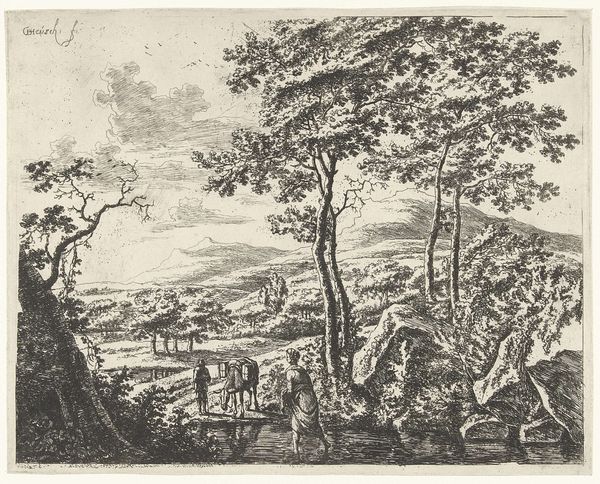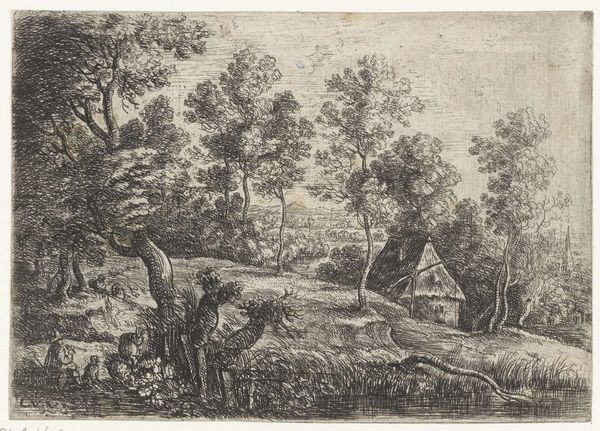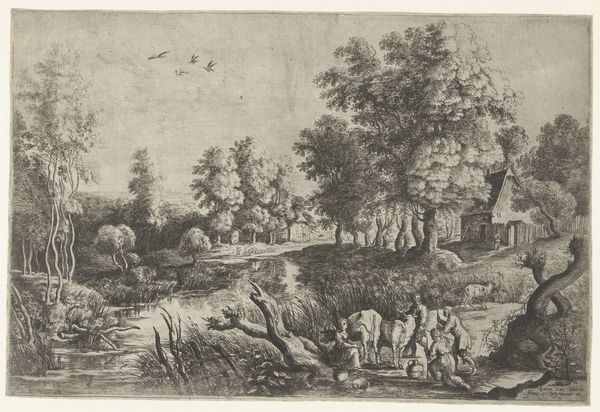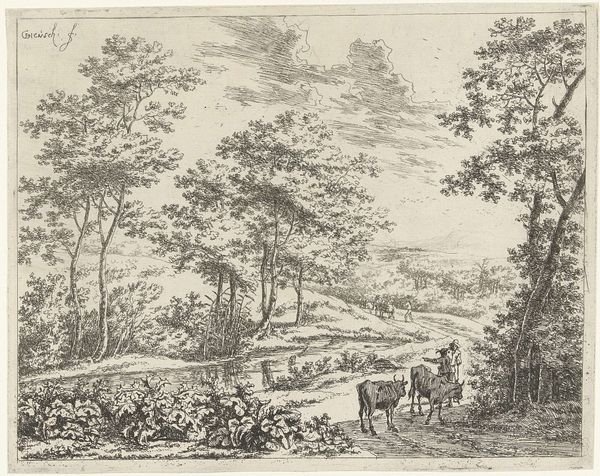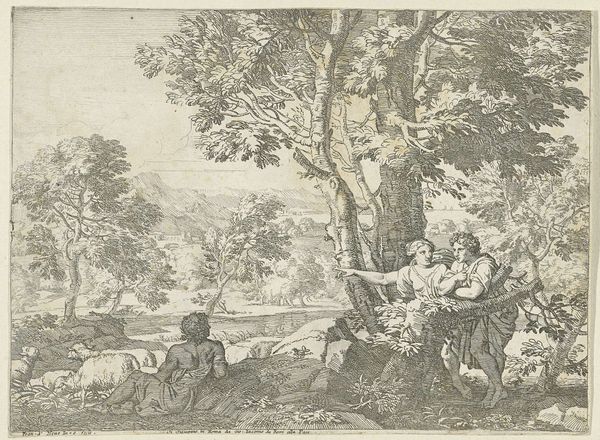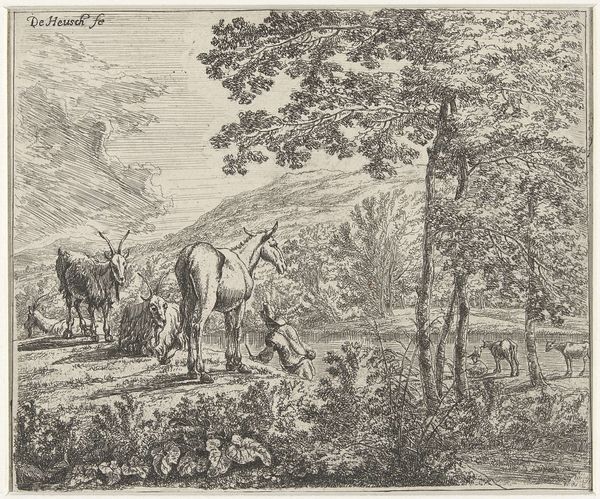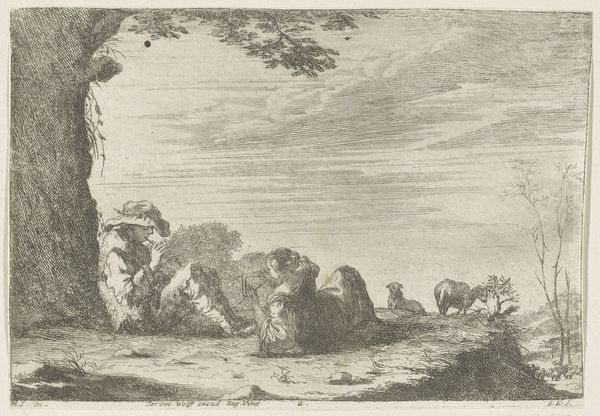
print, etching
#
baroque
#
dutch-golden-age
# print
#
etching
#
dog
#
landscape
#
figuration
#
genre-painting
Dimensions: height 194 mm, width 221 mm
Copyright: Rijks Museum: Open Domain
Curator: Karel du Jardin’s etching, “Heuvellandschap met herderin en hond bij rustende kudde,” created in 1653, offers us a fascinating glimpse into Dutch Golden Age landscape traditions and the period's interest in rural life. It is held at the Rijksmuseum. Editor: My first thought is "peaceful"—though there's a sort of stillness that's almost melancholic. The landscape feels expansive, yet the composition keeps returning to that solitary figure and her little dog. Curator: Absolutely. Du Jardin was a master of etching. Consider the materiality here: etching allowed for the mass production and distribution of images, bringing landscapes, like this idealized pastoral scene, to a broader audience beyond the wealthy elite. It's reproductive technology shaping the accessibility of art. Editor: I love the almost obsessive detail—especially how he renders the light filtering through the trees on that hillside. I keep getting drawn back to that dog though—such a tiny, alert presence right at the herderin's feet. Is it watching the sheep, or keeping her company in this remote spot? It's all about the small things, the unnoticed moments of being alive, don't you think? Curator: It highlights how these seemingly simple genre scenes subtly reinforced the social hierarchies of the time. The etching process itself—the labor, the distribution—contributes to this system of production. We should think how these prints were created, traded, consumed. Editor: True, it is crafted. This is a constructed scene for a constructed audience, even with all the quiet rural feeling. I guess even back then artists understood what looked great to the growing bourgeois of Dutch society—a slice of curated nature. Still gets me, though. That lonely woman and that little pup just make a quiet space in all that commerce somehow. Curator: And through that space and consideration of its history, we get new understandings of culture itself, no? Thanks for helping see more today. Editor: My pleasure! The feeling I get, looking at that print, that’s always a collaboration—like looking with a new best friend every single time.
Comments
No comments
Be the first to comment and join the conversation on the ultimate creative platform.
